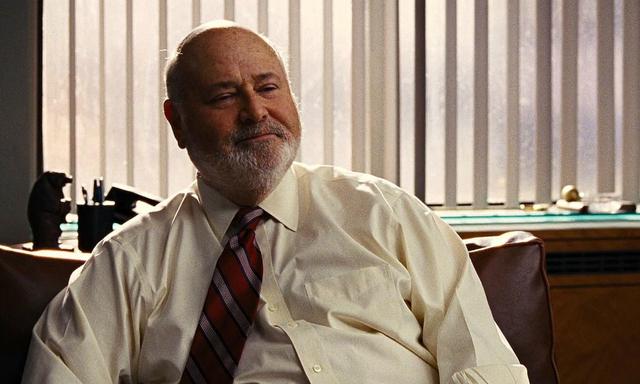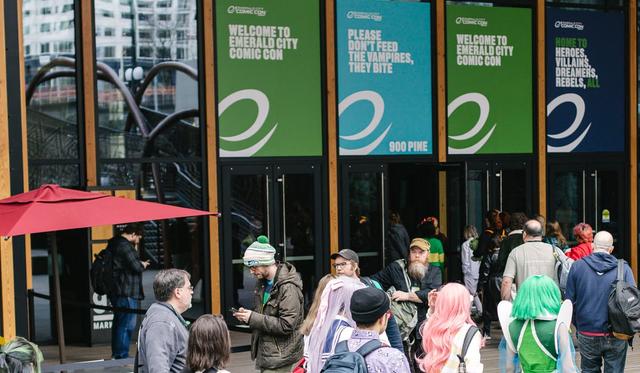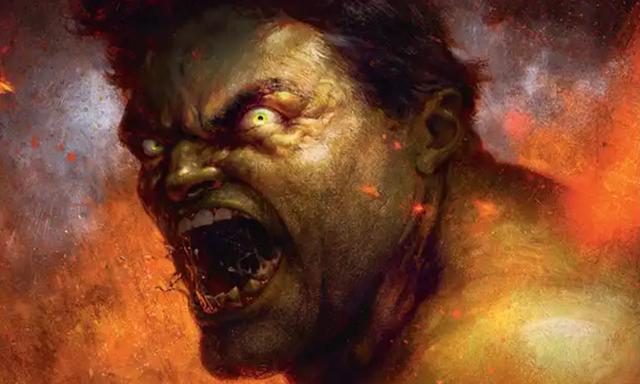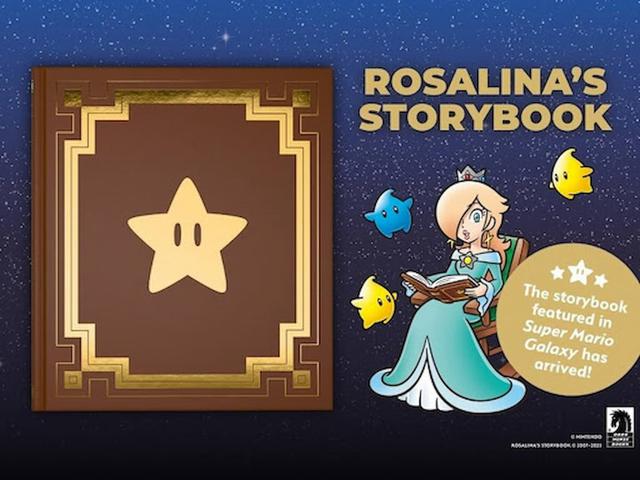If you click on a link and make a purchase we may receive a small commission. Read our editorial policy.
Black Adam writer Christopher Priest says Warner Bros. Discovery had heavy input - even on the jokes
Christopher Priest reflects on the themes and behind-the-scenes challenges in bringing the Black Adam maxi-series to life

One of the most complicated, morally complex figures in the DC Universe is Black Adam, a man who claimed the magical powers of Shazam for himself millennia ago only to be banished by the wizard for his wickedness. Since returning to the modern-day DCU, Adam has gone from nuanced and ostensibly noble Shazam supervillain to a character seeking redemption while leading his homeland of Kahndaq in the Middle East. And though Black Adam may seem himself as a misunderstood antihero who will do anything to protect his country, his occasional dips back into villainy threaten to completely derail any possibility of atonement.
Groundbreaking comic book creator Christopher Priest, along with artists Rafa Sandoval and Eddy Barrows, launched a solo maxi-series starring Black Adam in 2022. With an epic story spanning 12 issues, Adam discovers he has grown terminally ill and seeks to pass his magical mantle, selecting unassuming medical student Malik White as his intended successor. This plan proves more harrowing than Adam anticipated, including with the rise of a new host of supervillains known as the Akkad with their own axe to grind for Adam as he contemplates his mortality and relationship with his powers.
In an exclusive interview with Popverse reflecting on the entire 12-issue maxi-series, Priest shares his initial reluctance to write the story, explains the major themes across the 12 issues, declares his view on whether Black Adam himself is a supervillain or antihero, and reveals some of the unexpected behind-the-scenes hurdles to bring the maxi-series to the finish line. For those looking to have the complete series collected, the first volume is on sale now, with the second volume out Dec. 26 and available for preorder.

Popverse: Priest, I had read in earlier interviews that you were reluctant to write a 12-issue Black Adam maxi-series but warmed up to the idea after conversations with editor Paul Kaminski. Now that the series is done, how is looking back on what you did with the character?
Christopher Priest: Well, it wasn’t the number of issues or anything like that. I think my initial reluctance to do Black Adam was because I thought the Fawcett characters have a unique place in comics history and a unique design and theme. I wasn’t a real big fan of bringing those characters into the mainstream DC Universe. I thought trying to make Billy Batson and Captain Marvel, trying to make those characters relevant and have them exist in the same bandwidth as Superman and Batman, I thought that was wrong.
I thought that there is a wide variety and number of flavors of audiences who want to read comics. Comics shouldn’t all be one thing. I would encourage all publishers to be as diverse in their offerings as possible. The Fawcett characters really deserve their own unique place in the publishing line; that was my initial reluctance. I thought they made Black Adam a little too dark and he’s gone too far in his villainy, where he wiped out a whole country and all these other villainous things. I was kind of reluctant to get involved in it and Paul and I had a number of discussions.
In almost everything I do, I enjoy writing in the 'real world.' If I was writing the Justice League, what would the world be like if there actually were this group of people with the powers of gods, who had their own satellite, could beam themselves instantly anywhere across the Earth, and appear and meddle in our affairs? How would the world respond to that? That was my brief half-life on Justice League, which was not well-received by DC. There were a lot of fans of that but there weren’t a lot of fans in the DC offices because I took it too seriously. [laughs]
I thought, what if I took that attitude and brought it to Black Adam. What would be the implications if there really was a guy as arrogant and as hard-headed as Teth-Adam, had those kinds of powers, and was a head of state in the Middle East? That’s just rife with storytelling opportunities and stuff for me to get in trouble with, so I thought “What the heck, let’s give it a shot!”
On the other end of it, I think we did a lot of good work there. I think it was more challenging an assignment than I realized because we are now living in the age of Twitter and social media. The parent companies of these major publishers are now these huge corporate global concerns. Now everybody is afraid of everybody and everybody is afraid of saying the wrong thing or being not politically correct or whatever the case is.
All the stuff that I really wanted to wallow in – the politics, the culture wars, the types of implications that seemed so obvious to me – became these places where, even if editorial approved some pages, people above editorial, whoever these people may be, would send notes. Paul and I would get these notes back – and it wasn’t from Paul or even [editor-in-chief] Marie Javins or even DC Comics – it was 'those people' going 'You can’t tell that joke! You can’t say that!' It became pretty challenging. I’m glad we did it and glad we went there but it was a pretty tough journey, let’s put it that way.

I find it fascinating that a lot of this series has Adam back in his human form as Theo Adam, whom we haven’t seen in a minute; Black Adam is usually walking around transformed with his Bela Lugosi haircut. What was it about finding the man in the god and ultimately divorcing the two by the story’s ending?
That’s the thing that appealed to me. What appealed to me the most was, in reading current incarnations of Black Adam, he never transforms. He never takes his human form and I thought that was odd. I think if you wear immortality like that, the immortality ends up becoming like a heavy winter coat. Every now and then, it just becomes a burden and you want to take it off.
My thought about Theo Teth-Adam is that he’s a rich guy and a head of state who rides the subway. He’ll never say why he rides the subway but, when he confides in his reluctant protege, the reason why he rides the subway is to take the overcoat off and be in touch with his humanity. Without me saying or having him say, either in dialogue or in those first-person narrative captions – I’d hate to have a caption of him saying “I’m Theo Teth-Adam and I’m lonely.” [laughs]
We want to demonstrate that loneliness, that this is a guy that’s ultimately a walking suit. He’s a guy who sold out his own humanity. The whole point of the series, if you want to put a button on what the whole series is about, is that this is about how this guy got his humanity back.

Running parallel to that, we’ve got Malik White. Malik is free from all the villainous baggage that Black Adam has, and yet, he inherits the powers of a god, with a white costume in contrast to Adam’s. What was it about having this point-of-view character on an opposite trajectory – Adam isn’t even an antihero – with Malik going lighter in the end?
It’s funny that you should mention the antihero thing because that was one of the main points of disagreement between myself and DC. DC was always trying to position this guy as an antihero and it’s a thing that we like to do – and I include myself with this – because we’re all comic book fans. People like Dark Phoenix more than Jean Grey, Dark Phoenix was cool. [laughs] People like these dark characters and Black Adam has always been cooler than Captain Marvel, Shazam, or whatever he’s called this week.
The problem is that, for reasons that I don’t understand, it’s always an audience’s desire to redeem the character and humanize the character. For a while, they called Deathstroke an antihero and I just called bullshit on that. Deathstroke is definitely a villain, there’s no two ways about it.
Geoff Johns did a revision on Black Adam’s origin that I thought was absolutely brilliant, it was just so brilliant. He changed the origin slightly so that the Wizard Shazam was giving the power to this boy, he was always giving the power to pure, unspoiled individuals. He wasn't giving the power to adults, he was always dealing with youths. He gave the power to this boy named Amon, who was Black Adam’s nephew, and Teth kills the kid to steal the power. I was like “Why didn’t I think of that?! Geoff is a genius!” [laughs]
That guy, who murdered that kid, you’re not going to sell me on being an antihero. There is no redemption for Black Adam, that was a note I wrote for myself and became a running theme. It became this thing that haunted him and he knew it, he’d say it out loud and give it voice to it, “There is no redemption for Black Adam.” That was kind of where that went.
All along, Malik was thrown in there for obvious reasons. I’m not even trying to be coy about it, he was there to be the light to this guy’s darkness. I tend to think that the best storytelling is defining heroes by action rather than having all these captions where the hero is telling you what they’re thinking, like “I really want a pizza.” I’d rather put them in a situation where the only conclusion that the reader can draw, having read the scene and seeing these characters interact, the conclusion that the reader comes to is “A-ha! I bet he wants a pizza” without anyone having said that.
Malik was there to bring out these parts of Black Adam because I don’t see Black Adam being that open and honest and talking about his feelings. That was the point of him being there. Also, if you’re going to hire me to write something – editors, if you’re listening – don’t be surprised if some humor creeps in because I’m just the class clown. With Black Adam, everything I had read before I thought had been so relentlessly grim – why so serious? [laughs] It needed to lighten up.
The problem with Malik, now we’re running afoul of “those people.” Paul and Paul’s bosses at DC editorial handle the creation of the books, but at some point, every book coming out from DC and Marvel now goes to “other people.” They go to lawyers and other people who send down their notes. Malik was just a magnet for notes and, after a while, I just started to get exhausted and gun-shy about Malik because I couldn’t have Malik say what I’d think he’d say or do what I’d think he’d do because we would get “the notes” from on high from somewhere.
This was not even DC Comics, this was “those people” and, often, we had – to their credit and my gratitude – not just Paul but two or three tiers of bosses above Paul go and fight the fight to get some of Malik’s lines in print. I thank everybody for that and I don’t want to name names because I’d probably get in more trouble than I’m already in, but DC fought hard for Malik to be allowed to be in existence and have the voice that I wanted to give him. I really appreciate that level of support and it’s not like they had to do it, this isn’t the X-Men. [laughs] People went and fought for that and I appreciate that.

We have to talk about the art in this book! How was working with Rafa Sandoval and Eddy Barrows?
Rafa was incredible. With every artist, there’s a learning curve involved. Rafa and I started out together and I was like “Oh, we’re going to be in trouble” because Rafa is very used to this superhero mentality, but very quickly – and I mean very quickly – Rafa started to feel me out and I started to feel him out.
Unfortunately, we got into a thing with Dark Crisis, where DC needed to pull him. It was through no fault of his own or my own, we were very happy with his work. There was nothing weird going on, Rafa and I are thick as thieves, but Rafa went off to save the world and thank God he did. In comes Eddy and we had to start all over again. [laughs]
Eddy is a fine artist, and I don’t mean that he’s a fine guy, he’s like Rembrandt. With Eddy, you’d think the guy gets paid by the line or brush stroke, it’s unbelievable work there. Both of those guys, along with Jose Luis and whoever else was helping us along the way, they demonstrated enormous patience, particularly with me being as persnickety as I am. I’m very grateful to everyone involved.
Black Adam is written by Christopher Priest, penciled by Rafa Sandoval and Eddy Barrows, inked by Sandoval and Eber Ferreira, colored by Matt Herms, and lettered by Willie Schubert. The first collected volume is on sale now, with the second volume on sale Dec. 26 and currently available for preorder.
Follow Popverse for upcoming event coverage and news
Find out how we conduct our review by reading our review policy
Let Popverse be your tour guide through the wilderness of pop culture
Sign in and let us help you find your new favorite thing.
















Comments
Want to join the discussion? Please activate your account first.
Visit Reedpop ID if you need to resend the confirmation email.